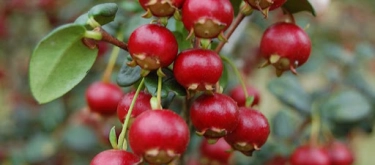Guava: Taste, Uses, Benefits and Harm
Guava, a tropical fruit native to Central America, is widely enjoyed for its sweet, floral flavor and juicy, slightly gritty texture. Known for its high vitamin C content, guava is popular in tropical and subtropical regions, where it’s used in fresh fruit salads, juices, desserts, and savory dishes. The fruit’s pink, white, or yellow flesh adds vibrant color and a tropical essence to many recipes.

Primary Flavor Characteristics
Guava has a sweet, tropical flavor with a hint of tanginess and floral notes. The taste is often compared to a blend of pear and strawberry, with a slight tartness that balances its natural sweetness. The flavor varies depending on the variety, with some guavas being milder and more acidic while others are intensely sweet and fragrant.
Aromatic and Taste Nuances
Guava has a unique aroma that is fruity and floral, often described as tropical and reminiscent of strawberries or passionfruit. The taste is refreshing and sweet, with a slightly gritty texture from the small edible seeds.
Scientific Description of Taste and Aroma
- Aroma: Fruity, floral, and tropical, reminiscent of strawberry and passionfruit.
- Taste: Sweet, with mild tanginess and floral undertones.
- Texture: Juicy, slightly gritty, with small, crunchy seeds.
In-Depth Flavor Analysis of Guava
Underlying Flavor Notes
Guava has a complex flavor profile that includes several layered notes:
- Sweet and Fruity: The natural sugars provide a fruity sweetness that is both rich and refreshing.
- Mild Tanginess: The hint of tartness adds brightness to guava’s flavor, balancing its sweetness.
- Floral Undertones: Guava has a mild floral essence that adds depth to its tropical profile.
- Gritty Texture: The seeds add a slightly gritty texture, contributing to its unique mouthfeel.
Impact of Ripeness on Flavor
- Unripe Guava: Firm texture, more acidic with a pronounced tartness and less sweetness.
- Ripe Guava: Soft and juicy, with a balanced sweet-tart flavor and enhanced floral notes.
- Overripe Guava: Intensely sweet, softer, and often more fragrant, suitable for smoothies or desserts.
Textural Qualities
Guava has a juicy, slightly gritty texture due to the presence of small edible seeds. The flesh is soft and smooth when ripe, making it enjoyable both fresh and blended.
Culinary Uses of Guava
Primary Uses
- Fresh Eating: Ripe guava can be eaten fresh, with or without the skin, providing a refreshing, tropical snack.
- Juices and Smoothies: Guava adds a unique flavor to tropical juices and smoothies, blending well with other fruits.
- Desserts: Guava is used in desserts such as sorbets, ice creams, and pastries for its sweet flavor and vibrant color.
- Salsas and Chutneys: The sweet and tangy flavor of guava enhances salsas, chutneys, and sauces, often paired with spices.
- Savory Dishes: Guava is sometimes used in savory dishes, adding a sweet-tart contrast to meats or seafood.
Ideal Pairings for Guava
- Citrus Fruits: Lime and lemon enhance guava’s tropical sweetness, adding acidity and brightness.
- Mint and Basil: Fresh herbs complement guava’s fruity flavor, especially in salads and beverages.
- Coconut and Pineapple: These tropical ingredients intensify guava’s flavor in smoothies and desserts.
- Chili and Spices: A hint of chili or cinnamon adds warmth and contrast to guava’s sweetness.
- Cheese: Creamy cheeses like brie or cream cheese balance guava’s tangy sweetness, especially in appetizers.
Quick Facts About Guava
- Tropical Origin:
Guava is native to tropical regions and is widely cultivated in countries such as India, Mexico, and Brazil. - Nutrient-Rich:
It is a rich source of vitamin C, dietary fiber, and antioxidants. - Low-Calorie:
Guava is a low-calorie fruit, making it ideal for healthy snacking. - Versatility:
Enjoyed fresh or incorporated into both sweet and savory dishes. - Distinctive Flavor:
Its balanced taste combines sweetness and tartness with subtle tropical nuances. - Cultural Significance:
Guava plays an important role in the culinary traditions of many tropical and subtropical regions. - Hydrating:
With its high water content, guava contributes to overall hydration. - Global Popularity:
Increasingly favored worldwide for its health benefits and refreshing taste.

Benefits of Guava
- High in Vitamin C:
Boosts immune function, supports skin health, and aids collagen production. - Rich in Antioxidants:
Helps combat oxidative stress and reduces inflammation. - Supports Digestive Health:
Dietary fiber promotes healthy digestion and maintains gut health. - Low-Calorie and Nutritious:
A light, nutrient-dense fruit ideal for weight management. - Hydration:
High water content helps maintain proper hydration levels. - Nutrient-Dense:
Provides a balanced mix of vitamins, minerals, and antioxidants for overall well-being. - Energy Boost:
Natural sugars offer a quick and sustained energy source. - Versatile in Cuisine:
Its unique flavor enhances both traditional and innovative dishes.
Additional Nutritional Insights and Unique Varietal Details
- Core Composition:
Guava is primarily composed of water, natural sugars, and dietary fiber, contributing to its hydrating properties. - Caloric Content:
On average, 100 grams of guava provide approximately 68–75 calories, making it a light yet nutritious option. - Micronutrient Profile:
Rich in vitamin C, potassium, and B vitamins, guava supports immune function, metabolism, and cardiovascular health. - Dietary Fiber:
Guava’s fiber content aids in digestion and helps regulate blood sugar levels. - Varietal Differences:
Different cultivars of guava may exhibit variations in sweetness and tartness, with some offering more aromatic complexity. - Enzymatic Activity:
Natural enzymes in guava facilitate the breakdown of carbohydrates, enhancing digestibility. - Antioxidant Capacity:
High levels of antioxidants, including polyphenols and vitamin C, protect cells from oxidative stress. - Culinary Innovation:
Chefs are incorporating guava into a variety of recipes—from tropical fruit salads and smoothies to creative desserts and savory salsas—highlighting its versatility.
How to Eat Guava
- Fresh and Whole:
Enjoy guava by washing it thoroughly, cutting it into wedges, and eating the flesh along with the seeds. - Fruit Salads:
Slice guava and mix it with other tropical fruits for a refreshing, nutrient-rich salad. - Smoothies and Juices:
Blend guava with other fruits like mango or pineapple for a revitalizing smoothie or juice. - Dessert Topping:
Use guava slices as a garnish for yogurt, ice cream, or even as a component in fruit tarts. - Salsas and Chutneys:
Dice guava and combine it with herbs and spices to create a tangy salsa or chutney that complements savory dishes. - Frozen Treats:
For a cooling snack, freeze sliced guava and enjoy it as a refreshing, healthy dessert.
Harm (Potential Negative Effects) of Guava
- High Fiber Content:
While beneficial, excessive consumption of guava may lead to digestive discomfort or bloating in some individuals. - Allergic Reactions:
Although rare, some people may be allergic to guava, experiencing symptoms such as itching or swelling. - Oxalate Content:
Guava contains moderate levels of oxalates, which could contribute to kidney stone formation in susceptible individuals. - Pesticide Residues:
Non-organic guava may contain pesticide residues; therefore, it is advisable to wash the fruit thoroughly or opt for organic varieties. - Caloric Considerations:
Despite being low in calories, overconsumption may contribute to an increased overall caloric intake if not balanced with other foods. - Acidity:
The natural acids in guava might cause discomfort in individuals with sensitive stomachs or acid reflux if consumed in large quantities.
Selection and Storage of Guava
- Selecting Guava:
Choose guava that is slightly soft to the touch, indicating optimal ripeness, yet still firm enough to retain a crisp texture. Look for vibrant, unblemished skin and a strong, fruity aroma. - Storage Recommendations:
Store unripe guava at room temperature to allow natural ripening. Once ripe, keep the fruit in the refrigerator in a sealed container to maintain its freshness and texture. For longer storage, peel and slice guava, then freeze for later use in smoothies or desserts.
References
- Nguyen, T. & Chen, L. (2018). Exotic Fruits of Asia: Nutritional and Culinary Perspectives. Singapore: Tropical Press.
- Wong, A. (2019). "Nutritional and Antioxidant Properties of Tropical Fruits." Journal of Tropical Agriculture, 11(3), 98–105.
- Smith, J. (2017). The World of Tropical Fruits: From Orchard to Table. New York: Global Fruit Press.
- Brown, A. & Lee, S. (2020). "Vitamin C and Antioxidant Profiles in Exotic Fruits." International Journal of Nutritional Studies, 12(2), 112–120.
- Garcia, P. (2018). Tropical Delights: A Guide to Exotic Fruits. London: Culinary Innovation Press.
- Martinez, R. (2019). "Long-term Nutritional Impacts of Exotic Fruits in Modern Diets." Journal of Food Science and Technology, 14(1), 78–85.
- Kim, S. (2020). "Dietary Fiber and Micronutrient Profile in Tropical Fruits." Food Chemistry Research, 15(3), 89–97.
- Anderson, D. & Gupta, R. (2021). The Encyclopedia of Exotic Fruits. Los Angeles: Global Food Press.
Conclusion
Guava offers a captivating sensory experience with its delightful balance of sweetness and subtle tartness, crisp texture, and vibrant visual appeal. Rich in vitamin C, antioxidants, and dietary fiber, guava is a low-calorie, nutrient-dense fruit that supports immune function, digestion, and overall well-being. Whether enjoyed fresh, blended into smoothies, or incorporated into creative culinary dishes, guava delivers a refreshing tropical flavor that enhances both taste and nutrition. Embrace guava as a versatile ingredient that enriches your diet and inspires culinary creativity.









